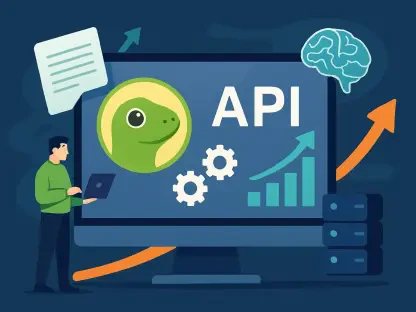Binary logic can optimize high-level programming efficiency by providing a more fundamental and streamlined approach to data processing and decision-making. By leveraging binary operations and logic gates, high-level programs can achieve faster execution times and greater simplicity in complex algorithms.
Optimizing code is a crucial aspect of software development, often associated with refining algorithms and data structures. However, an innovative approach involves leveraging binary logic to enhance efficiency, particularly in high-level programming languages like Java, C, and Zig. This article delves into the creative use of binary logic to exploit hardware resources, offering a fresh perspective on code optimization.
Optimization Beyond Algorithms and Data Structures
Rethinking Traditional Optimization
Traditionally, code optimization focuses on improving algorithms and data structures. While this strategy has delivered considerable results, it often overlooks hardware-aware optimization, which leverages the underlying hardware to boost performance. Modern compilers are skilled at instruction-level parallelism, and this has made intense machine-level optimizations less common among software developers. However, there remain untapped opportunities to use binary logic for specific tasks, thereby enhancing computational efficiency. Revisiting traditional optimization methods and incorporating hardware-aware strategies can bridge the gap between software and hardware, making programs faster and more efficient.
Binary logic is particularly advantageous in scenarios where traditional loop mechanisms result in higher time complexities. Instead of repeatedly iterating through sets, binary logic allows certain operations to be completed in constant time (O(1)), circumventing the inefficiencies tied to traversal-based search mechanisms. This form of optimization not only speeds up processing but also conserves computational resources, making code execution quicker and more cost-effective. The practice of binary logic-based optimization challenges the status quo, urging developers to explore beyond the confines of algorithmic efficiencies and data structural improvements.
The Role of Binary Logic in High-Level Languages
High-level programming languages like Java, C, and Zig often overlook the potential benefits of binary logic, assuming its application is limited to low-level languages. This misconception ignores the efficiency gains high-level languages can achieve by adopting binary logic. Java, traditionally viewed as a verbose language, can benefit significantly. By using binary logic to solve computational problems, Java code execution can be made faster and more efficient, allowing for the creation of high-performance applications with compact and optimized code.
Even in languages like C and Zig, typically closer to machine code, binary logic can provide substantial optimization. For example, Zig’s approach to memory-safe operations still benefits from binary logic in enhancing speed and reducing loops. Simple operations, like determining the presence of an element in a set, can be transformed using bit manipulation techniques, allowing these languages to optimize often-used routines and operations. This presents a holistic view where binary logic not only expedites processes but also ensures consistency in performance, set operations, and other computational tasks, broadening the horizon of high-level language capabilities.
Candidate and Occupancy Sets
Understanding Candidate Sets
Candidate sets play a fundamental role in numerous computational tasks, embodying potential solutions or elements for a particular problem. Representing these sets efficiently can lead to significant performance improvements. Typically, candidate sets are managed using standard data structures such as lists or arrays, limiting the optimization potential due to the inherent O(n) complexity in search and insertion operations. Employing binary logic, however, presents an elegant alternative that drastically reduces these complexities.
By representing candidate sets as bit arrays, we can optimize the storage and retrieval processes. Each bit in the array corresponds to a candidate, with a bit value of 1 indicating the presence of a candidate and 0 signifying its absence. This binary representation allows for quick checking and modification of candidate existence. The computational simplicity of binary operations, such as bit-shifting, makes it possible to handle candidate sets more efficiently, enabling O(1) operations that outperform traditional linear searches. This approach not only optimizes memory usage but also accelerates decision-making processes, crucial for applications involving large candidate pools, like game solvers or scheduling algorithms.
Managing Occupancy Sets
Occupancy sets represent the current candidates already utilized in a task, necessitating efficient mechanisms to verify the presence of new candidates or manage the inclusion of additional ones. In scenarios like Sudoku solvers, occupancy sets are integral, ensuring no repetitions within rows, columns, or blocks. The challenge lies in determining if a new candidate can be added or if it already exists, a task that can quickly become cumbersome with traditional approaches. Employing binary logic for this purpose streamlines the process, enabling quick and efficient occupancy checks directly within the bit array representation.
Binary operations such as bitwise AND (&) and OR (|) prove invaluable in managing occupancy sets. For instance, the presence of a candidate can be verified by performing a bitwise AND between the candidate bit and the set. If the result is non-zero, the candidate exists within the set. Conversely, adding a candidate is as simple as performing a bitwise OR. These operations, being O(1), facilitate rapid updates and checks, eliminating the overhead associated with more complex data structures. Moreover, handling occupancy sets this way reduces the cognitive load on developers, enabling more coherent and readable code, which is both maintainable and scalable, embodying the essence of efficient software engineering.
Achieving O(1) Time Complexity
Achieving O(1) time complexity is a significant milestone in algorithm design and data structure optimization. This means that the operation’s execution time is constant and does not depend on the size of the input data set.
The Limitations of Traditional Loops
In most high-level programming environments, loops are employed to traverse and manipulate sets, leading to O(n) time complexity in several operations. Although this approach is straightforward and widely understood, it introduces inefficiencies in terms of both time and resource utilization. When iterating through large datasets in search of specific elements, the performance penalty becomes evident, as each loop iteration consumes computational cycles. This repeated traversal can be particularly wasteful when dealing with operations that could be optimized to constant time.
By leveraging binary logic, specifically bit manipulation techniques, it is possible to bypass the limitations of loops. For example, instead of iterating through an array to find if an element is present, a single bitwise operation can reveal the presence or absence of the element instantaneously. This shift from O(n) to O(1) time complexity represents a paradigm shift in handling data sets in high-level programming. It underlines the importance of adopting more sophisticated approaches that align closer with hardware capabilities, thereby significantly boosting performance and efficiency.
Binary Representation of Sets
Representing sets using bit arrays is a powerful method to advance computational efficiency. A bit array is essentially an array of bits, with each bit acting as a flag to signify either the inclusion or exclusion of an element in the set. This compact form of representation drastically reduces space complexity, especially beneficial when working with large datasets. For instance, each number or candidate can be mapped to a bit position in the array, enabling swift and direct access to elements.
This binary representation simplifies many operations that would otherwise require extensive looping. For example, checking if a candidate is present in the set only necessitates checking the bit value at the corresponding position in the bit array. Similarly, adding or removing candidates is as simple as setting or clearing bits. These operations are inherently O(1) in terms of time complexity, providing considerable advantages over traditional methods. The reduced computational overhead means faster execution times and decreased resource consumption, making programs not only more efficient but also more scalable. This binary approach is particularly well-suited for applications demanding high-speed calculations and real-time performance, setting the stage for a new era of optimized programming techniques.
Conversion and Operations
Converting Candidate Numbers to Binary
Converting candidate numbers to their binary representation is a straightforward process central to the implementation of binary logic in set operations. The fundamental operation involves calculating a bit position by shifting 1 to the left by the candidate number minus one, expressed as candidate = 1 . This operation effectively creates a binary number where only the bit corresponding to the candidate's position is set to 1. The simplicity of this conversion process belies its powerful applications in optimizing operations.
This approach to conversion offers several advantages. Firstly, it enables a clear and concise way to represent candidates within a bit array, making it simple to check for presence or make modifications. Secondly, the operations involved in this conversion are O(1), which eliminates the delays inherent in more complex data structure manipulations. Finally, the conversion to a binary format integrates seamlessly with subsequent binary operations, maintaining a consistent and efficient workflow. This conversion process represents a pivotal step in harnessing the full potential of binary logic for high-level programming, facilitating faster and more reliable computational tasks.
Checking Candidate Presence
Checking if a candidate is present within a set can be greatly simplified through binary operations. The binary & (AND) operation is particularly effective for this purpose. Once a candidate is converted to its binary representation, determining its presence involves performing a binary AND between the candidate bit and the set's representation. The operation if ((candidate & set) != 0) succinctly checks if the candidate bit is set within the set, indicating its presence.
This method stands in stark contrast to traditional search mechanisms that would involve iterating through elements to find a match. By reducing the search process to a single bitwise operation, the overhead associated with traversal and comparison is entirely avoided. This not only accelerates the execution time but also reduces energy consumption, making the system more efficient. Furthermore, this binary approach is not limited to presence checks but can also be extended to other set operations such as union, intersection, and difference, all while maintaining constant time complexities. This demonstrates the versatility and power of binary logic in optimizing high-level programming tasks, providing a robust foundation for efficient set management.
Next Candidate Computation
In high-stakes elections, the process of identifying the next candidate often involves a complex calculus of political strategy, public opinion, and internal party dynamics. This computation determines not just the immediate selection but also the potential trajectory of the party or movement in the long term.
Efficiently Finding the Next Candidate
Finding the next candidate that is not currently present in a set can be achieved by leveraging automatic carry propagation, a technique that efficiently computes the next available candidate in constant time. This process involves a unique formula expressed as next = (((candidate + set) ^ set) + candidate) >> 1, which exploits binary arithmetic to skip over occupied positions and identify the next vacant bit. The elegance of this approach lies in its ability to determine the next candidate without iterating through the set, drastically improving efficiency.
The mechanism works by adding the candidate to the set and then performing an XOR operation to isolate the differences. The subsequent addition and right shift (>> 1) carry out the propagation, effectively locating the next unchecked bit. Implementing this in high-level languages unleashes a new level of optimization where traditional looping constructs are obsolete. This technique is particularly beneficial in applications requiring high-frequency candidate evaluations, such as real-time game solvers or complex algorithmic computations. The ability to bypass multiple candidates in constant time underscores the profound impact of binary logic on high-level programming, illustrating its capacity to streamline and enhance computational tasks.
Handling Overflow and Exceptions
When a program experiences an integer overflow, it exceeds the maximum value that a data type can hold, leading to unexpected behavior or crashes. Exception handling mechanisms, such as try-catch blocks, allow developers to manage such errors gracefully by catching exceptions and providing alternative ways to handle them without terminating the program abruptly. Proper handling of overflow and exceptions ensures that the program functions reliably and maintains data integrity, even when faced with unexpected inputs or conditions.
While binary operations for candidate computations greatly enhance efficiency, they must also be robust to handle potential exceptions and overflow scenarios. For instance, in puzzles like Sudoku, reaching a state where no more candidates are available requires backtracking to previous states. Handling such conditions necessitates additional logic to ensure the integrity and continuity of the computational task. Overflow occurs when the operations extend beyond the maximum bit limit, necessitating careful management to avoid errors.
To manage these exceptions, it is crucial to implement checks that detect when the candidate operations exceed the allowable range. This can be done by verifying the results against the set's boundaries and integrating fallback mechanisms to trigger backtracking or alternative strategies. The efficient handling of exceptions ensures that the system remains reliable and stable, even under edge cases. Moreover, documenting and incorporating these exception-handling routines into the binary logic approach provides a comprehensive framework for developers, equipping them with the tools needed to maintain consistency and accuracy in their applications. This balance of efficiency and reliability exemplifies the nuanced application of binary logic in high-level programming, fostering innovation while ensuring robustness.
Extensions to Larger Sets
Representing Larger Sets with Arrays
When the size of a set exceeds the capacity of a single machine word, the challenge of maintaining efficiency while representing larger sets arises. In such scenarios, arrays of integers can be employed to create extended bit arrays, ensuring that the principles of binary logic are preserved across larger datasets. This approach involves distributing the bit array across multiple integers, each serving as a segment of the overall set. Managing these extended arrays requires additional functionality to handle indexing across the array segments but retains the core benefits of binary representation.
The utilization of arrays to represent larger sets enables the scalable application of binary operations. For example, operations like checking the presence of a candidate or adding a new candidate need only adjust to account for the specific integer segment within the array. This approach maintains the O(1) complexity of binary operations, ensuring that efficiency gains are not sacrificed even as the dataset size grows. Moreover, this scalability is particularly advantageous in applications requiring the management of vast amounts of data, such as big data analytics or large-scale simulations. By extending the principles of binary logic to accommodate larger sets, developers can continue to harness its optimization potential without encountering performance bottlenecks.
Maintaining Core Efficiency Benefits
Maintaining core efficiency benefits is essential for the continued success and competitiveness of an organization. By focusing on optimizing processes, reducing redundancies, and leveraging technology, companies can achieve higher productivity and cost savings. Efforts to streamline operations and improve efficiency can lead to better resource management, enhanced customer satisfaction, and increased profitability. As businesses face ever-changing market dynamics and technological advancements, prioritizing core efficiency remains a critical strategy for long-term growth and sustainability.
Despite relying on arrays and more complex structures for larger datasets, the core efficiency benefits of binary logic remain intact. The bitwise operations fundamental to binary logic continue to deliver constant time complexity, facilitating rapid and efficient management of sets. As such, the extended approach with arrays integrates seamlessly with the foundational binary operations, preserving the speed and resource efficiency that are hallmark characteristics of this optimization strategy.
To ensure the seamless transition from single machine word sets to larger array-based representations, developers can implement utility functions that abstract the complexity of array management. These functions streamline common operations like bit manipulation across array segments, further enhancing usability and maintainability. Additionally, maintaining a modular approach allows for easier updates and improvements, ensuring that the core efficiency benefits of binary logic are consistently applied. Embracing these strategies enables the effective scaling of applications, providing performance stability regardless of dataset size. The continued advantages of binary logic in optimizing operations, even for larger datasets, underscore its transformative potential in high-level programming, equipping developers with an advanced toolkit for both small and large-scale projects.
Practical Applications and Examples
Game Solvers and Beyond
The application of binary logic in game solvers, such as Sudoku, provides a vivid demonstration of its practical benefits. Sudoku solvers require frequent checks and updates to ensure that numbers comply with the puzzle's rules across rows, columns, and blocks. Traditional approaches may involve extensive looping and comparison operations, leading to significant delays, especially with more complex puzzles. By leveraging binary logic, these operations can be condensed into swift bitwise manipulations, enabling solvers to process moves in real time.
Additionally, binary logic can be applied to optimize other game solvers that involve set management or constraint checking. Examples include crossword puzzle generators, where valid words are inserted into the grid while ensuring they fit with the existing letters, and logic puzzles like nonograms or kakuro, involving intricate rule checks and set manipulations. The efficiency gains from binary logic enable these game solvers to handle more complex puzzles seamlessly, providing a smoother user experience and opening new possibilities for puzzle generation and solving algorithms. This practical application encapsulates the transformative impact of binary logic, showcasing its potential to revolutionize traditional game solver designs and implementations.
Broader Implications for Software Development
Optimizing code remains a pivotal aspect of software development. This process typically involves refining algorithms and data structures to improve performance and efficiency. Yet, there's a fascinating, less conventional method that developers can use: harnessing binary logic to increase efficiency, especially in high-level programming languages like Java, C, and Zig.
Binary logic, which operates at the hardware level, offers unique opportunities to streamline code by directly interacting with the core mechanisms of a computer. High-level languages abstract much of this complexity, making the process accessible to developers without needing in-depth hardware knowledge. By creatively applying binary logic, programmers can achieve significant optimizations, such as reducing memory usage and speeding up execution times.
This article explores the innovative application of binary logic for code optimization, providing a fresh perspective on an age-old problem. It discusses how understanding and utilizing binary operations can lead to more efficient software solutions. Binary logic optimizes code by minimizing redundancies and improving the execution flow, which is particularly advantageous when working with powerful, complex systems.
In conclusion, while traditional optimization methods focus on algorithmic and data structure improvements, leveraging binary logic offers an alternative route that taps into hardware capabilities. By embracing this approach, developers can unlock new levels of performance in their applications, demonstrating that sometimes the most effective solutions lie in the fundamental principles of computing.









